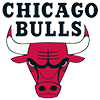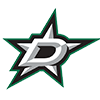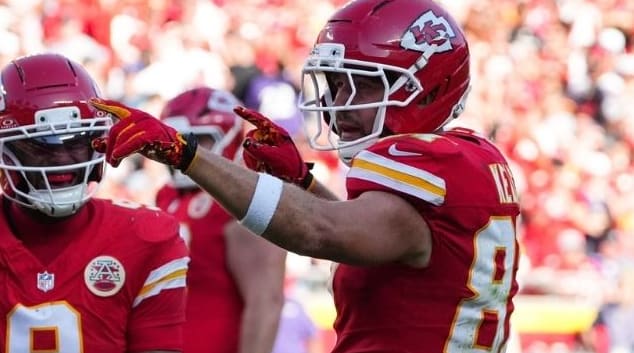While the ADPs for various formats have fallen into a somewhat reliable order, many of those selections are speculative picks from teams with unsettled playing time projections. This article series will sort through some of the most important job battles among those teams, three at a time and three times per week.
Due to the risk of otherwise only talking about competitions involving the top rookie running backs, the order of subjects will have to be a bit arbitrary. The next post (Friday) will look at the Indianapolis running backs, San Francisco running backs and San Francisco wide receivers.
This post will look at the Detroit running backs, Washington running backs and Philadelphia wide receivers. The depth chart order in each case is listed in ostensibly declining current fantasy value.
Detroit Running Backs
D'Andre Swift
Kerryon Johnson
Jason Huntley
Bo Scarbrough
Ty Johnson
This backfield split 1,136 snaps last year, including 318 for Ty, 281 for Kerryon and 171 for Scarbrough. Despite the tenure of the previously mentioned backs, the Lions used the 35th and 172nd selections on Swift and Huntley, respectively, in the draft. Even if the Lions keep more running backs on the active roster than most teams, Ty and Scarbrough are both candidates to see their prior workloads harmed by the rookies.
Ty is an explosive athlete (4.4 40 at 5-foot-11, 210) and was highly productive as a runner at Maryland, but both there and early in his NFL career he's failed to convince as a pass catcher. He lined up wide most often among the returning Detroit backs, but he was ineffective with 24 receptions for 109 yards on 31 targets. That's no good, and both of the rookies should provide immediate, conclusive upgrades over most of Ty's reps from last year, especially in the passing game.
If Scarbrough sticks on the roster it's may be due to coach Matt Patricia committing to retaining a pure power running option, though at 6-1, 228, Scarbrough has a great deal of linear athleticism too (4.52 40, 40-inch vertical, 129-inch broad jump). He seems to offer little as a pass-catching threat, though (one catch for five yards on four targets), so his presence tipped off the play call a bit. If that remains the case, it probably reduces him to a situational player.
Kerryon looked like a potential star as a rookie, piling up 854 yards and four touchdowns from scrimmage on just 347 snaps in his age-21 season. A knee injury undid his 2019 sophomore season, causing him to miss Weeks 8 through 15 while otherwise struggling a bit as a runner, averaging 3.6 yards per carry after 5.4 in his rookie season. The Detroit run blocking might have simply gotten worse, as Kerryon had more trouble getting past the line of scrimmage. While consistently promising, through two years Kerryon has looked more adequate than dominant, showing a limited ability to withstand contact for extra yardage. He's shown the ability to exploit space effectively, but Swift is bad news for him because Swift is the type of back who might be able to create his own space at the NFL level.
Although they're both second-round picks, Swift's prospect profile implies significantly more upside than Kerryon's. The good news for Kerryon is that Swift never showed the ability to take up a big workload at Georgia, so it's unlikely that the Lions run Swift into the ground at any point. If the Lions just need one play, though, then Swift almost has to be the better back. At 5-8, 212, with a 4.48-second 40, Swift is smallish but densely built, granting him a lot of velocity for someone with his center of gravity. Kerryon, by some contrast, is a bit slower and a bigger target at 5-11 and 1/2, 213. Swift averaged 6.6 yards per carry on 440 carries at Georgia, and his pass-catching projection is promising to the point that it wouldn't surprise to see him line up at receiver twice or more per game in 2020.
Huntley is also capable of lining up at receiver, though he's the worst candidate among all Detroit runners to take up a high-volume workload. But even at 5-8, 190, the former New Mexico State star could prove useful at some point due to his unique explosiveness (4.40 40, 39.5-inch vertical, 131-inch broad jump). Huntley is a unique threat in the open field and should secure a roster spot with some level of comfort. He also might be the favorite to return kicks for Detroit.
Washington Running Backs
Derrius Guice
Antonio Gibson
Adrian Peterson
Bryce Love
J.D. McKissic
Peyton Barber
Guice has had discouraging injury luck since Washington selected him in the second round of the 2018 draft, his rookie season ended by an ACL tear and the 2019 season disrupted by a meniscus tear (right knee) before it was ended by an MCL sprain (left knee). The prior ACL occurred in the left knee, so he has recent proper tears in both knees over a roughly a 1.25-year span. Bad luck might beget more bad luck, but it's important to note that this is the only thing that has stopped Guice from already breaking out.
If Guice stays healthy then there's not much question that he'll make a notable or even unique impact as a runner. At 5-11, 224, with a 4.47-second 40, Guice brings a similar aesthetic as and maybe even superior athleticism to a player like Nick Chubb. For a bruiser back to average 6.5 yards per carry over 471 attempts at LSU is uncommon, and the explanation to why it happened isn't complicated — Guice is tough to bring down and is really fast and elusive for his build. With three 20-yard carries, one 40-yard carry and one 40-yard reception on 42 carries and nine targets, Guice has provided exactly the explosiveness we'd have reason to expect.
Guice is unproven at best as a pass-catcher, though, and Gibson presents a threat there especially as a third-round pick out of Memphis. Gibson (6-0, 228) played more receiver than running back last year but was implausibly explosive at both tasks, catching 38 of 56 targets for 735 yards and eight touchdowns while taking 33 carries for a staggering 369 yards and four touchdowns. With a 4.39 40 Gibson is even faster than Guice, though probably a bit more monotonous as a runner. Gibson glides nicely and shows a strong one-cut skill set in his brief Memphis tape, but he doesn't show the ability to go berserk in all directions like Guice. Nonetheless, Gibson is an intimidating big-play threat in his own right and almost has to be better for passing game tasks than Guice. Given his size/speed dimensions and collegiate reps, Gibson could somewhat responsibly compare as generously as to someone like David Johnson. Given Ron Rivera's usage of Christian McCaffrey in the passing game, that skill consideration could prove a major part of the puzzle. The more it matters to Rivera, the better for Gibson and the worse for Guice.
Love is perhaps the biggest wild card of all, as it's unclear what the condition might be with his knee, which suffered a torn ACL at the end of the 2018 NCAA season before undergoing a followup procedure to address stiffness in October. Although he never had a chance to run a 40-yard dash, Love's past track times imply that he had pre-injury speed comparable to someone like Chris Johnson. That speed was no doubt the main propellant in Love's incredible 2017 season, when he ran for 2,118 yards (8.1 YPC) and 19 touchdowns, but the lack of chatter around him the past year makes it difficult to tell where he stands with Washington. If Love can't earn a roster spot then Washington might need to turn to McKissic to shore up their passing game reps, where the former star Arkansas State slot wideout offers a steady hand despite his limited upside.
No disrespect was intended by waiting this long to mention Adrian Peterson, as he rolled as a runner at age 34 last year, providing a stabilizing presence for an otherwise tipsy offense by producing 898 yards on 211 carries. Doing it again at 35 is another matter entirely, and if Guice can stay healthy then Washington might all of a sudden take more issue with the fact that Peterson still fumbles reliably (nine in the last three years).
Peyton Barber might make the team if Peterson falls off or gets hurt, but otherwise he should prove expendable.
Philadelphia Wide Receivers
Jalen Reagor
DeSean Jackson
Alshon Jeffery
J.J. Arcega-Whiteside
Marquise Goodwin
Greg Ward
John Hightower
Quez Watkins
Deontay Burnett
Marcus Green
Given that it primarily consists of rookies and injury prone veterans, the Philadelphia snap distribution at wide receiver might be a bit volatile this year. There's certainly depth, though, which is a contrast to 2019.
Reagor is the anticipated eventual star of the group, and there's a good chance the 21st overall pick surges to the top of this group surprisingly early. At 5-11, 206, Reagor is likely an athlete on the level of someone like Odell Beckham. Despite some drops and general consistency issues at TCU, Reagor is so obviously dangerous on tape that "alarming" is the main word that comes to mind once he gets the ball. Going from TCU's brutal quarterback play to that of Carson Wentz is a substantial change in conditions and could make Reagor look a tick faster yet.
Injuries have worn down the stock of the respected veteran duo of Jackson and Jeffery, to the point that it's difficult to tell just what they mean to the offense going into this year. Jackson received rave reviews for his training camp rapport with Wentz and was off to a fast start last year, dominating his former Washington team in Week 1 before a core muscle injury basically ended his season after a 154-yard, two-touchdown debut. Jackson remains fast and highly skilled at 33, but he hasn't played 16 games in a year since 2013. Things are somewhat more gloomy with Jeffery's 2020 projection, as the 30-year-old big wideout had enough injury concerns prior to his December Lisfranc injury, which has cast a dense uncertainty over most of his 2020 season.
If Jackson and Jeffery are hindered, then it's that much more important for J.J. Arcega-Whiteside to show progress after a disheartening rookie season. As much as JJAW didn't earn himself any benefit of the doubt last year, it's also far too soon to write off the otherwise promising prospect. He was uniquely productive at Stanford in college, and at 6-2, 225, his build is novel among Philadelphia wide receivers. He's down but definitely not out yet.
The burning-fast Goodwin might not be a realistic WR2 candidate since he has an outside receiver's game on a slot receiver's frame, but he's only three years removed from a 962-yard season when he averaged 9.2 yards per target. Goodwin's Olympic-level speed should age just fine as he turns 30 in November. More likely than not, though, Goodwin will just be a rotational speed threat.
If Goodwin falters, then one or both of Philadelphia's speedy Day 3 rookie wideouts will have to pick up the slack. The Eagles were clearly conscious of their lack of wideout speed aside from Jackson, as they added Goodwin, fifth-round pick John Hightower (Boise State) and sixth-round pick Quez Watkins (Southern Mississippi) in the same day. Hightower's age (24) makes it difficult to judge the value of his college production, but there's no doubt that he was a uniquely dangerous threat both downfield and as a ballcarrier. Watkins (22) is younger than Hightower and a bit faster (4.35 40 versus 4.43), but his skill set probably isn't as versatile as Hightower's.
Greg Ward was a late-season source of relief for many needy PPR owners in 2019, but the quarterback-turned-slot wideout still wasn't especially effective and doesn't have obvious NFL traits. His 71.8 percent catch rate from last year might look good at a glance, it's just that at 6.3 yards per target it didn't really amount to more than spinning the tires. Still, Ward has a good shot to make the team because he's the only obvious slot specialist on the depth chart.
If Ward doesn't make the final roster then it might have something to do with Burnett or Green. Green (5-8, 190) was a productive player at Louisiana-Monroe, and his pro day workout numbers were quite good (4.41 40, 37-inch vertical, 124-inch broad jump). By some contrast, Burnett is likely a below average athlete at 6-0, 186, but his production at USC was highly promising, and the same is true of his NFL reps to this point. Burnett didn't turn 20 until about six weeks into his 2017 season, yet over the 2016 and 2017 seasons he produced 142 receptions for 1,736 yards and 16 touchdowns on 211 targets (67.3 percent catch rate, 8.2 YPT). Burnett has been promising in his brief NFL exposure, too, drawing 19 targets on 143 snaps, catching 12 for 191 yards (63.2 percent catch rate, 10.1 YPT).

























